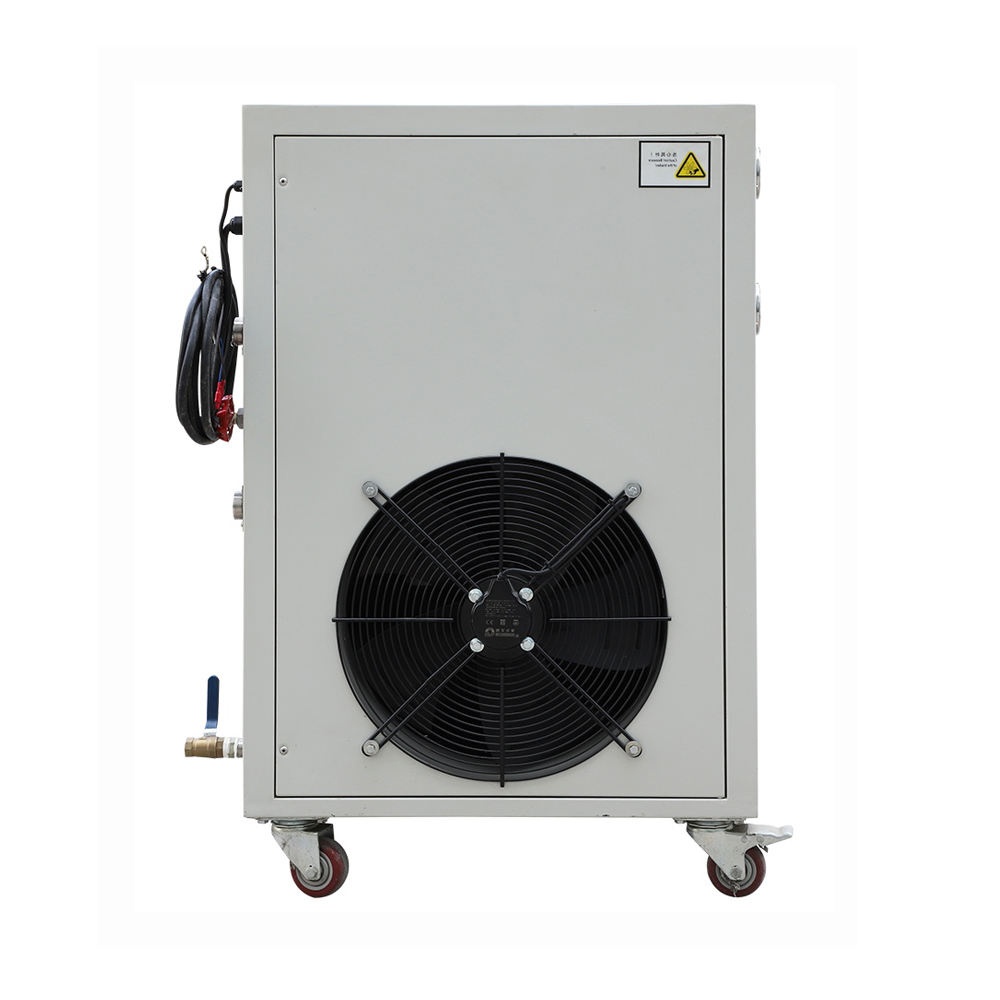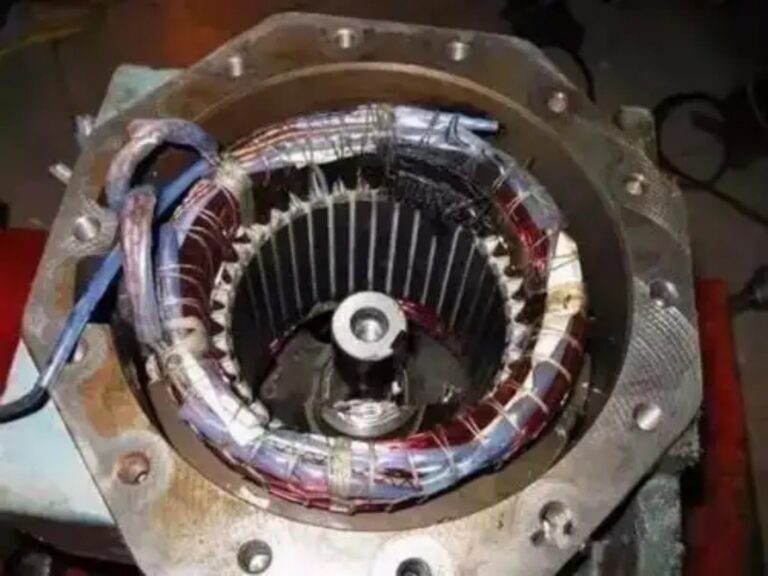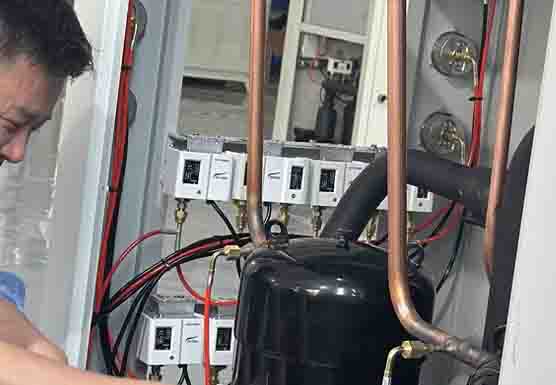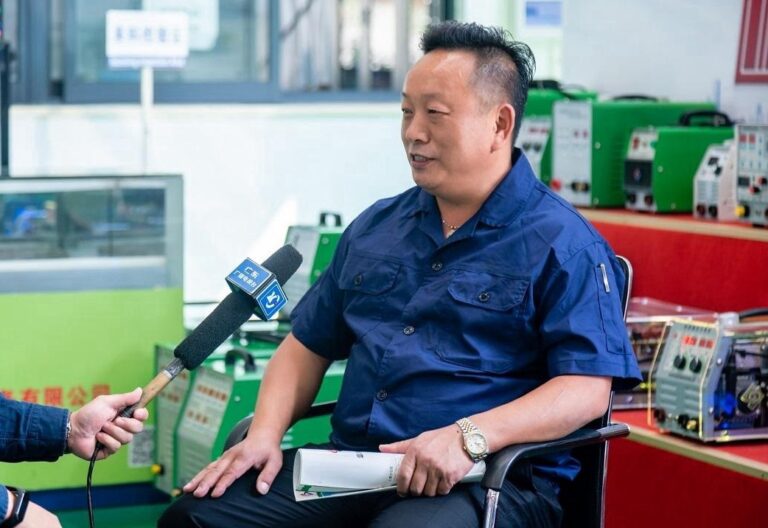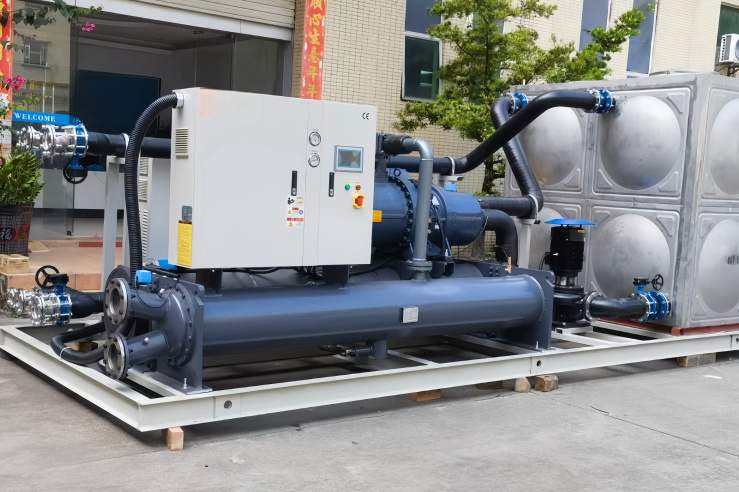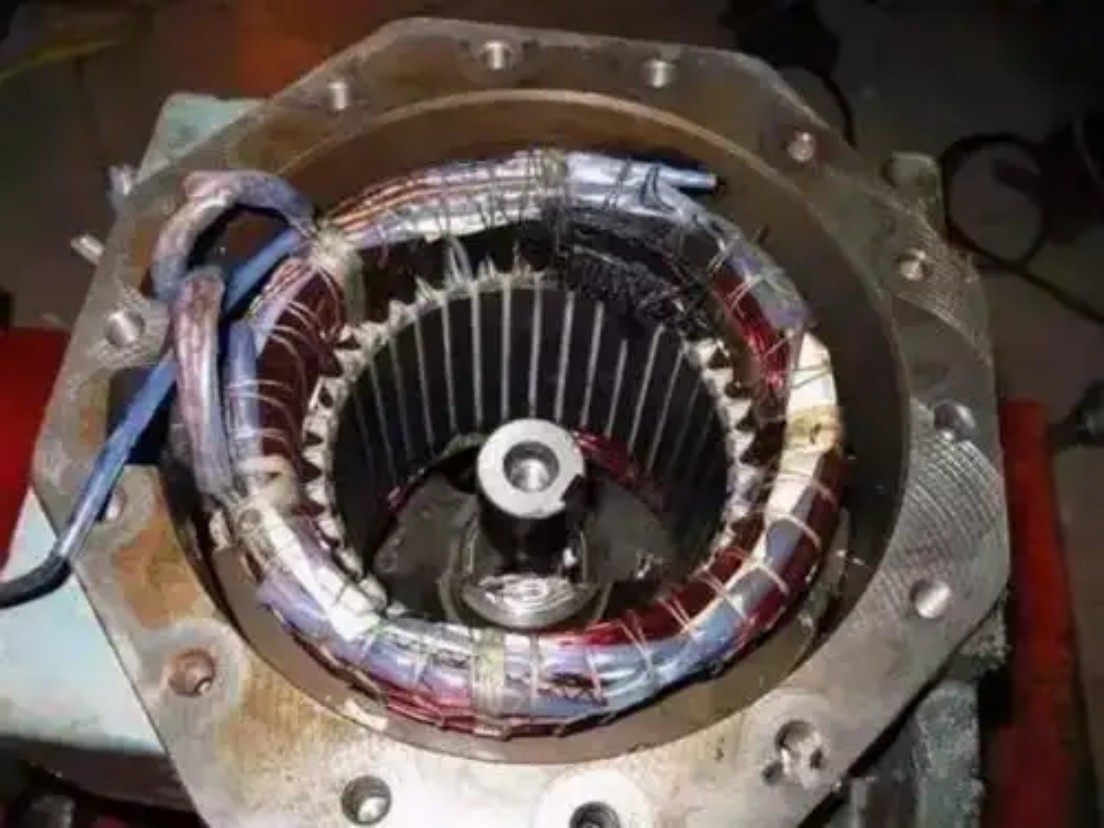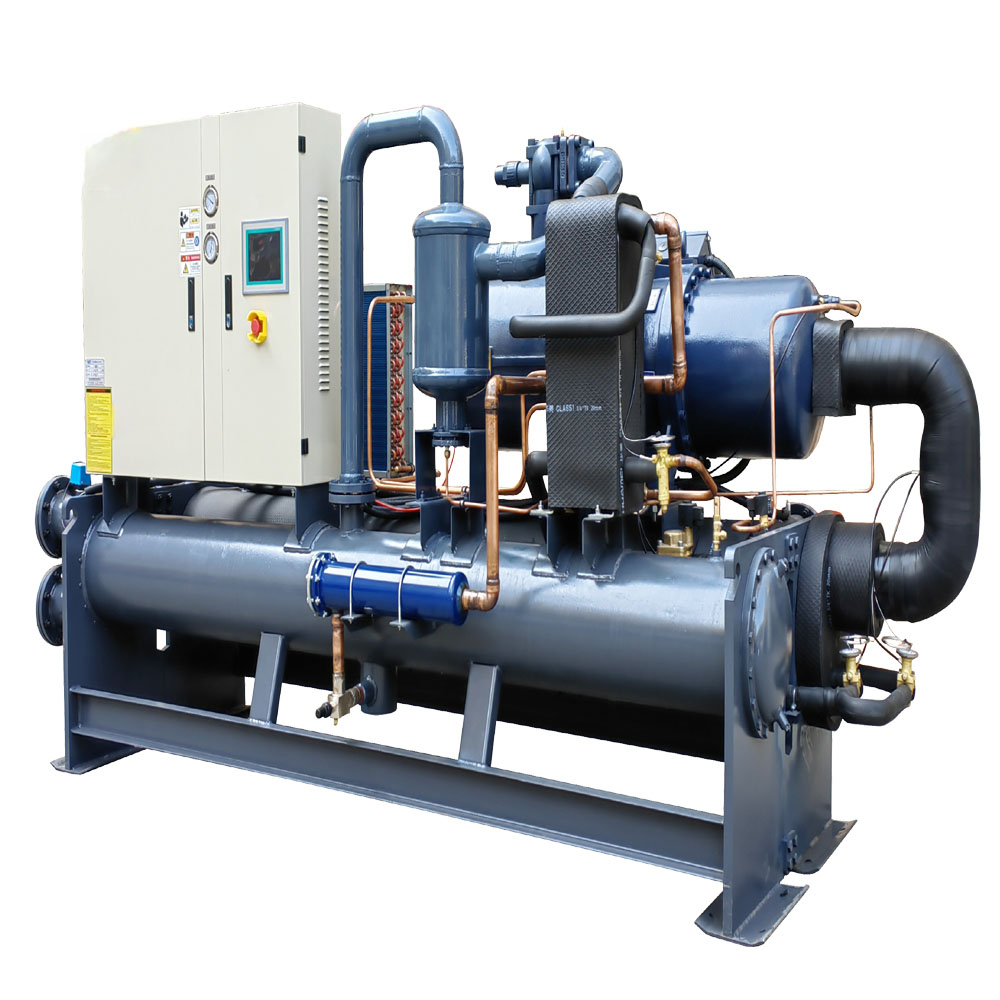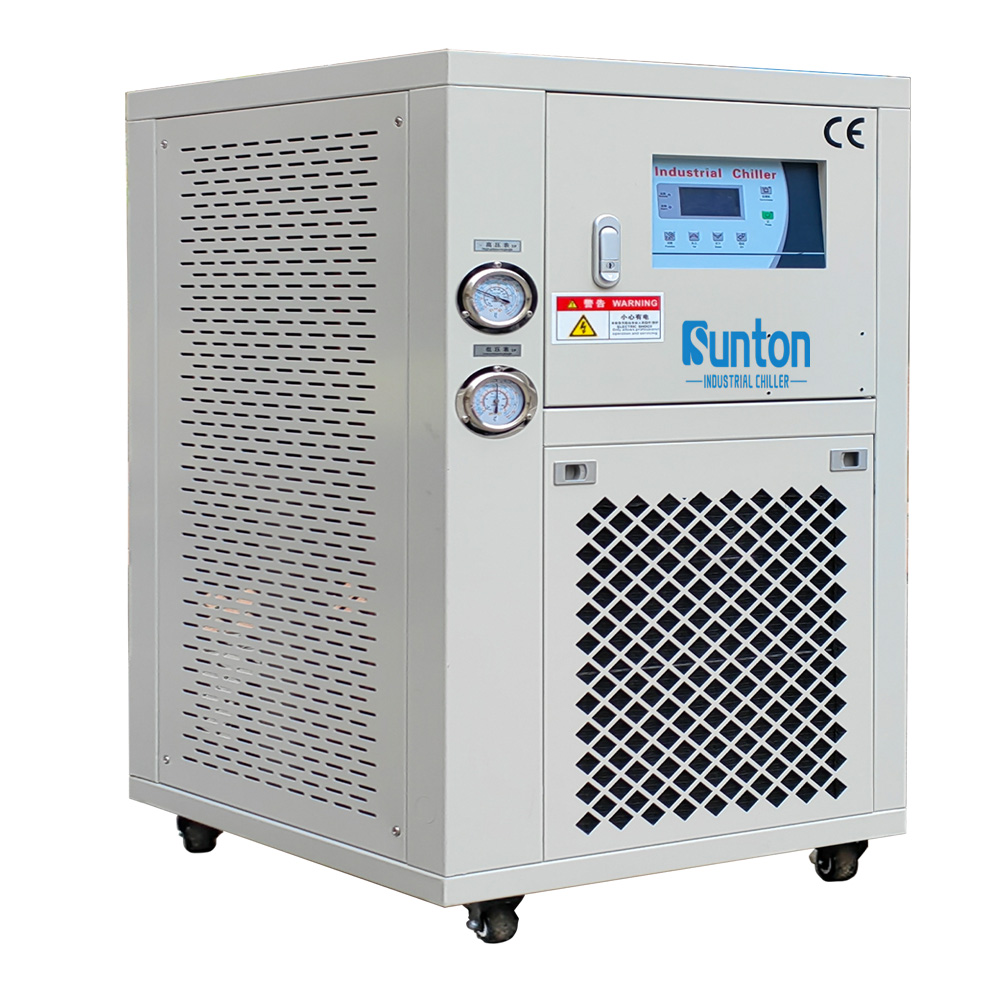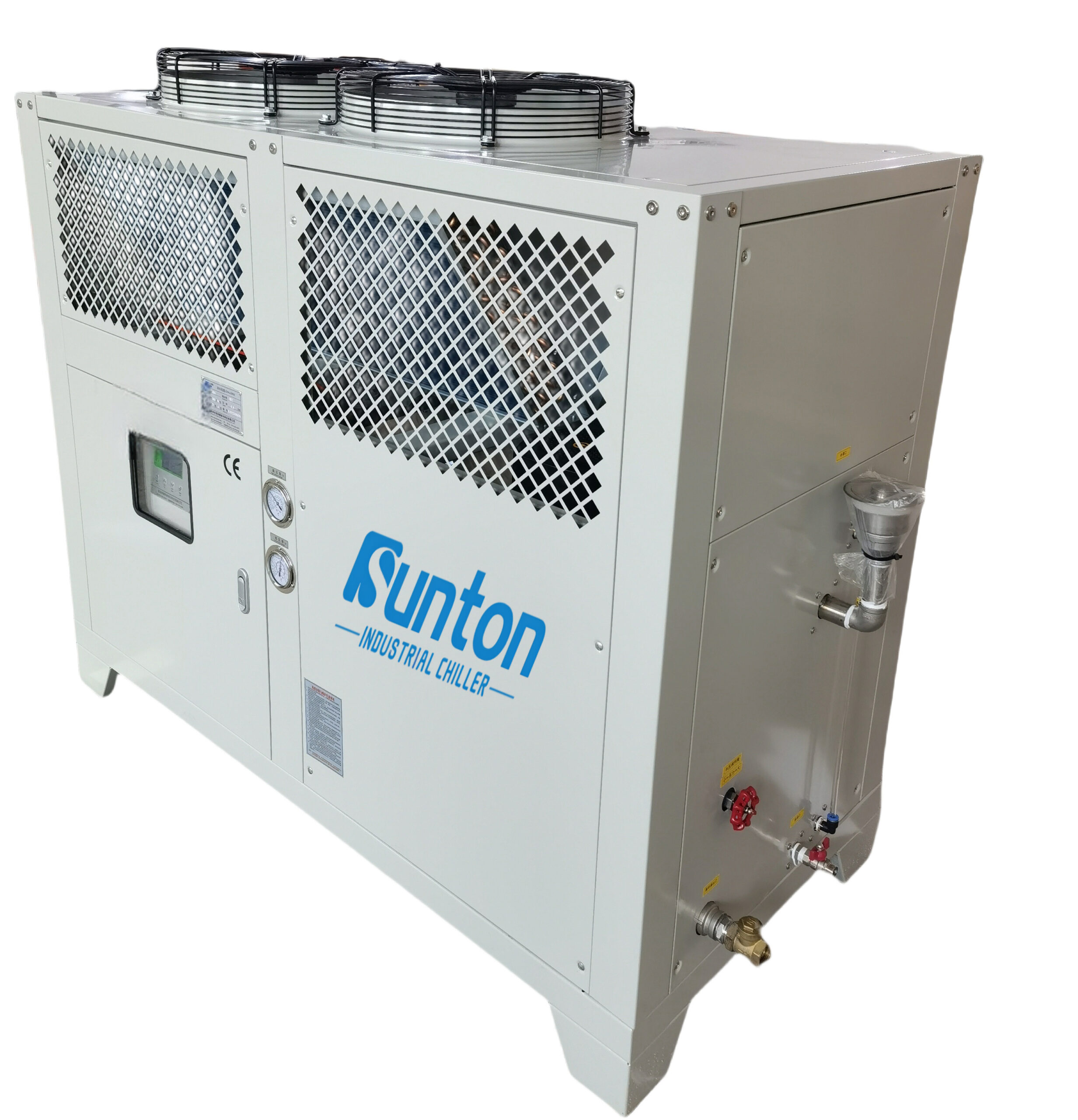-
Dalingshan Industrial Guangdong
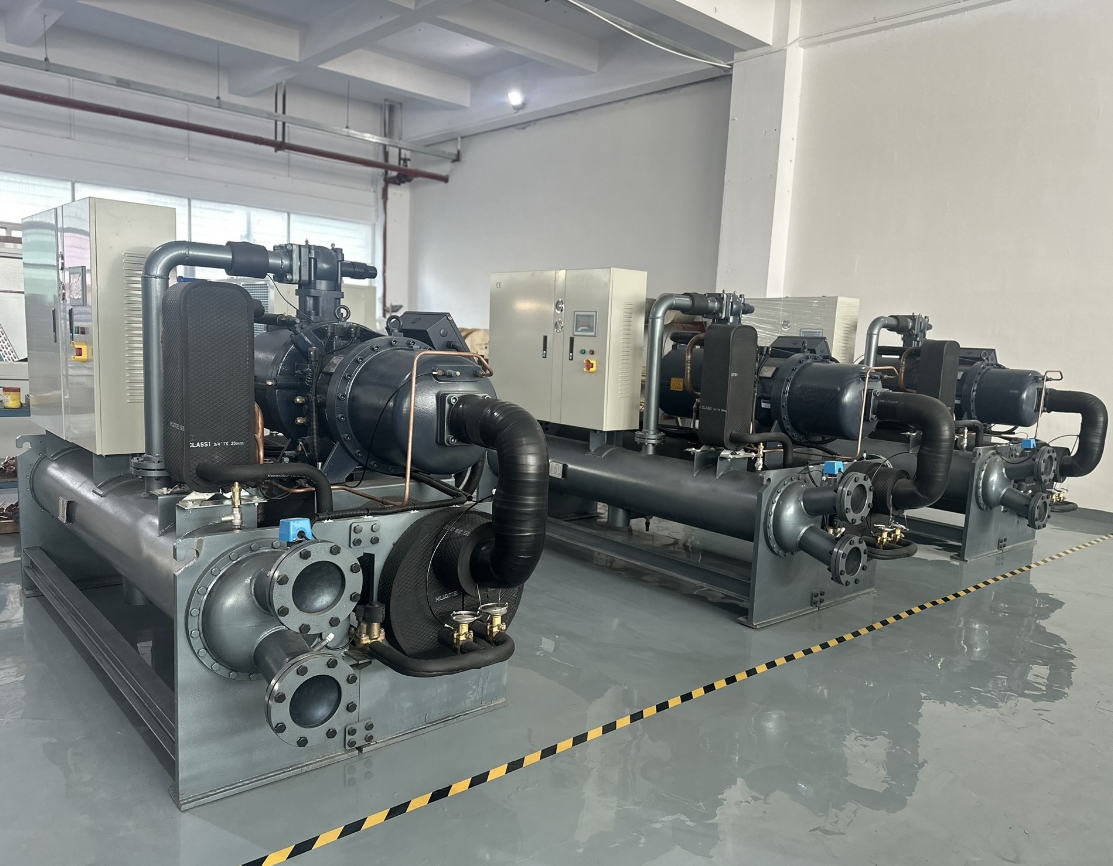
sistem pendingin die casting dalam proses die casting
Pendinginan Presisi: Landasan Proses Die Casting yang Efisien
Die casting merupakan proses manufaktur yang banyak digunakan dan dikenal karena kemampuannya untuk menghasilkan komponen logam rumit berkualitas tinggi dengan akurasi dimensi dan permukaan akhir yang sangat baik. Namun, untuk mencapai hasil optimal dalam die casting, kontrol suhu yang tepat selama fase pendinginan sangat diperlukan. Artikel ini membahas peran penting sistem pendingin dalam die casting, mengeksplorasi dampaknya terhadap efisiensi produksi, kualitas produk, dan profitabilitas secara keseluruhan. Artikel ini wajib dibaca oleh siapa pun yang terlibat dalam industri die casting, karena memberikan wawasan berharga tentang pengoptimalan proses pendinginan untuk meningkatkan kinerja dan hasil yang lebih baik. Dalam artikel ini, sebagai produsen pendingin air industri, saya akan berbagi pengalaman dan keahlian saya untuk mengungkap rahasia keberhasilan operasi die casting.
Daftar Isi
1. Apa itu Die Casting dan Mengapa Pendinginan Begitu Penting?
Pengecoran mati adalah proses produksi di mana logam cair disuntikkan di bawah tekanan tinggi ke dalam cetakan baja, yang juga dikenal sebagai die. Setelah logam cair mengisi rongga cetakan, logam tersebut dibiarkan dingin dan mengeras, membentuk bentuk yang diinginkan. Proses ini banyak digunakan di banyak industri untuk memproduksi komponen logam yang kompleks dan berkualitas tinggi.
Pendinginan merupakan langkah penting dalam proses die casting karena secara langsung memengaruhi kualitas, akurasi dimensi, dan waktu siklus produksi coran. Pengendalian laju pendinginan yang tepat memastikan bahwa logam cair membeku secara merata, mencegah cacat seperti porositas, penyusutan, dan cold shut. Oleh karena itu, pengendalian suhu merupakan aspek mendasar dari die casting. Sebagai seseorang yang sangat terlibat dalam produksi pendingin air industri, saya telah menyaksikan secara langsung bagaimana solusi pendinginan yang efektif dapat mengubah proses die casting. Pendinginan yang efektif tidak hanya meningkatkan kualitas produk tetapi juga secara signifikan meningkatkan produktivitas dengan mengurangi waktu siklus.
<img src="”https://thewaterchiller.com/wp-content/uploads/2024/12/industrial-chiller-water-cooled-water-chiller-with-scroll-compressor-5hp.jpg”" alt=""Air" cooled scroll water chiller” />
2. Bagaimana Cara Kerja Sistem Pendingin dalam Die Casting?
Dalam die casting, sistem pendingin biasanya melibatkan jaringan saluran atau sirkuit di dalam cetakan yang dilalui oleh cairan pendingin, seperti air atau oli. Sirkuit pendingin ini ditempatkan secara strategis untuk menghilangkan panas dari cetakan dan logam cair secepat dan semerata mungkin. Efektivitas sistem pendingin bergantung pada faktor-faktor seperti desain sirkuit pendingin, laju aliran cairan pendingin, dan konduktivitas termal material cetakan.
Ada beberapa metode pendinginan yang digunakan dalam die casting, termasuk pendinginan air, pendinginan oli, dan pendinginan udara. Setiap metode memiliki kelebihannya sendiri dan dipilih berdasarkan persyaratan aplikasi tertentu. Pendinginan air adalah metode yang paling umum karena kapasitas perpindahan panasnya yang tinggi. Menurut pengalaman saya, pendingin air yang dirancang dengan baik Pendingin Air Gulir Berpendingin Air dapat meningkatkan efisiensi proses die casting secara signifikan. Pelanggan kami di Industri Plastik dan Karet, Industri Permesinan, dan Industri Makanan dan Minuman telah melaporkan peningkatan yang luar biasa dalam hasil produksi mereka setelah menerapkan solusi pendinginan yang kami sesuaikan.
3. Faktor Apa Saja yang Mempengaruhi Laju Pendinginan pada Die Casting?
Beberapa faktor memengaruhi laju pendinginan dalam die casting, yang berdampak pada efisiensi keseluruhan proses produksi. Faktor-faktor utama di antaranya adalah:
- Desain Cetakan: Desain dan tata letak saluran pendingin dalam cetakan memegang peranan penting. Penempatan saluran yang tepat memastikan pembuangan panas yang merata.
- Laju Aliran Pendingin: Laju aliran yang lebih tinggi biasanya menghasilkan pendinginan yang lebih cepat, tetapi ini harus diseimbangkan untuk menghindari penurunan tekanan yang berlebihan.
- Bahan Cetakan: Bahan dengan konduktivitas termal yang lebih tinggi, seperti baja, memfasilitasi perpindahan panas yang lebih cepat.
- Suhu Pendingin: Suhu pendingin yang lebih rendah dapat mempercepat pendinginan tetapi dapat meningkatkan risiko kejutan termal pada cetakan.
- Bahan Pengecoran: Logam yang berbeda memiliki karakteristik pendinginan yang berbeda-beda; misalnya, aluminium mendingin lebih cepat daripada baja.
- Bagian Geometri: Bagian pengecoran yang lebih tebal mendingin lebih lambat daripada bagian yang lebih tipis, memerlukan pertimbangan cermat dalam desain cetakan.
Memahami faktor-faktor ini penting untuk mengoptimalkan proses pendinginan. Berdasarkan penelitian ekstensif dan umpan balik pelanggan, kami menemukan bahwa menyesuaikan sistem pendinginan dengan desain paduan dan komponen tertentu dapat secara drastis meningkatkan waktu siklus dan mengurangi cacat.
4. Apa Saja Tantangan Umum dalam Pendinginan Die Casting?
Beberapa tantangan dapat muncul dalam pendinginan die casting, yang sering menyebabkan inefisiensi produksi dan komponen yang rusak:
- Pendinginan Tidak Merata: Suhu yang tidak konsisten di seluruh cetakan dapat mengakibatkan pemadatan yang tidak merata, yang menyebabkan cacat seperti kelengkungan dan tegangan sisa.
- Kelelahan Termal: Siklus pemanasan dan pendinginan yang berulang dapat menimbulkan kelelahan termal pada cetakan, sehingga mengurangi masa pakainya.
- Titik Panas: Area lokal dengan suhu berlebihan, dikenal sebagai titik panas, dapat menyebabkan kerusakan dan cacat pada jamur.
- Pendinginan yang Tidak Memadai: Kapasitas pendinginan yang tidak memadai dapat memperpanjang waktu siklus dan membatasi hasil produksi.
- Kerak dan Korosi: Kotoran dalam air pendingin dapat menyebabkan penumpukan kerak dan korosi pada saluran pendingin, sehingga mengurangi efisiensi.
Mengatasi tantangan ini memerlukan pendekatan komprehensif yang mempertimbangkan desain sistem pendingin dan kualitas cairan pendingin. Pengalaman kami di Industri Kimia dan Farmasi, serta Industri Elektronik, telah menunjukkan bahwa perawatan rutin dan penggunaan cairan pendingin berkualitas tinggi sangat penting untuk mencegah banyak masalah ini.
5. Solusi Pendinginan Canggih Apa yang Tersedia untuk Die Casting?
Untuk mengatasi tantangan yang terkait dengan metode pendinginan tradisional, beberapa solusi pendinginan canggih telah dikembangkan:
- Pendinginan Konformal: Teknik ini melibatkan pembuatan saluran pendingin yang sesuai dengan bentuk komponen, sehingga menghasilkan pendinginan yang lebih seragam.
- Sisipan Konduktivitas Tinggi: Menggunakan material dengan konduktivitas termal tinggi di area kritis cetakan dapat mempercepat perpindahan panas.
- Pendinginan Pulsa: Hal ini melibatkan siklus aliran pendingin hidup dan mati untuk meningkatkan efisiensi pendinginan dan mengurangi kejutan termal.
- Saluran Pendinginan Mikro: Saluran yang lebih kecil menyediakan area permukaan yang lebih besar untuk perpindahan panas, meningkatkan kinerja pendinginan.
- Pendingin Khusus: Pendingin yang diformulasikan dengan sifat termal yang ditingkatkan dan penghambat korosi dapat meningkatkan efisiensi pendinginan dan melindungi cetakan.
Sebagai produsen pendingin industri, kami telah menjadi yang terdepan dalam mengembangkan dan menerapkan solusi pendinginan canggih ini. Misalnya, Pendingin Glikol telah terbukti sangat efektif dalam Industri Medis dan Laboratorium serta Lembaga Penelitian, di mana kontrol suhu yang tepat merupakan hal yang terpenting.
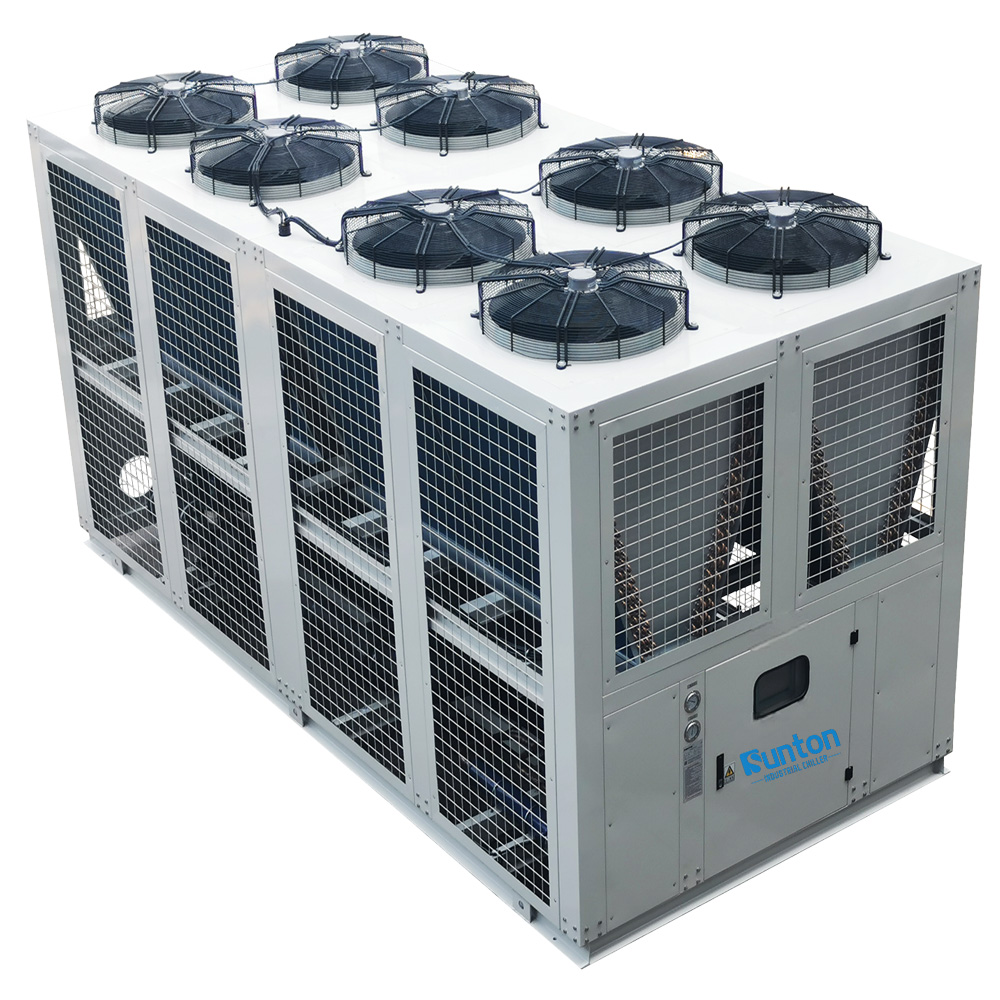
6. Bagaimana Mengoptimalkan Proses Pendinginan untuk Efisiensi Maksimum?
Mengoptimalkan proses pendinginan dalam die casting memerlukan pendekatan multi-segi yang mempertimbangkan berbagai faktor:
- Desain Cetakan: Memanfaatkan teknik canggih seperti pendinginan konformal dan penempatan saluran pendingin secara strategis dapat meningkatkan keseragaman pendinginan secara signifikan.
- Pemilihan Pendingin: Memilih pendingin yang tepat, baik itu air, oli, atau cairan khusus, dan memastikan kualitasnya dapat meningkatkan perpindahan panas dan mencegah masalah seperti kerak dan korosi.
- Kontrol Laju Aliran dan Tekanan: Mengoptimalkan laju aliran dan tekanan cairan pendingin memastikan pembuangan panas yang efektif tanpa menimbulkan tekanan berlebihan pada cetakan.
- Pemantauan dan Kontrol Suhu: Menerapkan sensor dan sistem kontrol untuk memantau dan menyesuaikan suhu cairan pendingin secara real-time dapat mempertahankan pendinginan yang konsisten.
- Perawatan Rutin: Melakukan pemeriksaan dan pemeliharaan rutin pada sistem pendingin, termasuk membersihkan saluran dan memeriksa kebocoran, dapat mencegah waktu henti yang tidak terduga.
7. Apa Dampak Pendinginan terhadap Umur Cetakan?
Pendinginan memegang peranan penting dalam menentukan masa pakai cetakan die casting. Pendinginan yang tepat dapat memperpanjang masa pakai cetakan dengan mengurangi kelelahan termal dan mencegah kerusakan akibat suhu yang berlebihan. Jika cetakan mengalami perubahan suhu yang cepat dan tidak merata, cetakan dapat mengalami retakan dan bentuk kerusakan lain yang memperpendek masa pakainya.
Dengan memastikan pendinginan yang seragam dan terkendali, tekanan termal pada cetakan diminimalkan, sehingga memperpanjang masa pakainya. Hal ini tidak hanya mengurangi frekuensi penggantian cetakan yang mahal tetapi juga memastikan kualitas komponen yang konsisten dari waktu ke waktu. Misalnya, menerapkan Pendingin Sekrup Berpendingin Udara dapat membantu menjaga suhu yang konsisten di seluruh cetakan, meminimalkan tekanan termal, dan memperpanjang masa pakai cetakan. Kami telah melihat peningkatan signifikan dalam masa pakai cetakan di antara klien kami di Pusat Data dan Industri Percetakan yang telah mengadopsi solusi pendinginan canggih kami.
8. Apa Peran Otomasi dalam Pendinginan Die Casting?
Otomatisasi telah menjadi semakin penting dalam die casting, khususnya dalam mengendalikan proses pendinginan. Sistem pendinginan otomatis dapat memantau dan menyesuaikan parameter proses secara real-time, memastikan pendinginan yang konsisten dan efisien. Sistem ini juga dapat terintegrasi dengan aspek lain dari proses die casting, seperti injeksi dan ejeksi, untuk menciptakan lini produksi yang sepenuhnya otomatis.
Otomatisasi tidak hanya meningkatkan pengulangan dan ketepatan proses pendinginan tetapi juga mengurangi kebutuhan untuk kontrol dan intervensi manual. Hal ini menghasilkan produktivitas yang lebih tinggi, biaya tenaga kerja yang lebih rendah, dan lingkungan kerja yang lebih aman. Misalnya, Pendingin Anti-Ledakan dirancang dengan fitur otomatisasi canggih, membuatnya ideal untuk digunakan di lingkungan berbahaya.
9. Bagaimana Saya Dapat Mengurangi Waktu Siklus dengan Pendinginan yang Efisien?
Mengurangi waktu siklus merupakan tujuan utama dalam die casting, karena berdampak langsung pada hasil produksi dan profitabilitas. Pendinginan yang efisien memainkan peran penting dalam mencapai waktu siklus yang lebih pendek dengan memadatkan logam cair secara cepat dan memungkinkan pengeluaran komponen yang lebih cepat. Untuk mengurangi waktu siklus melalui pendinginan yang efisien, pertimbangkan strategi berikut:
- Mengoptimalkan Desain Saluran Pendinginan: Menerapkan pendinginan konformal atau desain saluran canggih lainnya dapat meningkatkan perpindahan panas dan mengurangi waktu pendinginan.
- Meningkatkan Laju Aliran Pendingin: Laju aliran yang lebih tinggi dapat mempercepat pendinginan, tetapi ini harus diimbangi dengan kebutuhan untuk menghindari penurunan tekanan yang berlebihan.
- Gunakan Suhu Pendingin yang Lebih Rendah: Menurunkan suhu cairan pendingin dapat mempercepat pendinginan, tetapi harus diperhatikan untuk mencegah kejutan termal.
- Gunakan Teknologi Pendinginan Canggih: Memanfaatkan teknologi seperti pendinginan pulsa atau saluran pendinginan mikro dapat meningkatkan efisiensi pendinginan.
- Integrasikan Pendinginan dengan Otomatisasi Proses: Mengotomatiskan proses pendinginan dan mengintegrasikannya dengan aspek lain dari lini produksi dapat memperlancar operasi dan mengurangi waktu siklus keseluruhan.
Dengan menerapkan strategi ini, produsen dapat mengurangi waktu siklus secara signifikan dan meningkatkan hasil produksi. Klien kami di Industri Laser dan Industri Makanan dan Minuman telah melaporkan pengurangan waktu siklus yang signifikan setelah menerapkan solusi pendinginan yang dioptimalkan, seperti Menara Pendingin.
10. Bagaimana Pendinginan Mempengaruhi Kualitas Komponen Die-Cast?
Proses pendinginan memiliki dampak yang mendalam pada kualitas komponen die-cast. Pendinginan yang tepat memastikan pemadatan logam cair yang seragam, yang penting untuk mencapai sifat mekanis dan akurasi dimensi yang diinginkan. Pendinginan yang tidak memadai atau tidak merata dapat menyebabkan berbagai cacat, termasuk:
- Porositas: Udara atau gas yang terperangkap di dalam coran dapat menciptakan rongga atau pori-pori, sehingga melemahkan komponen tersebut.
- Penyusutan: Saat logam mendingin dan menyusut, ia dapat menyusut secara tidak merata, yang menyebabkan ketidakakuratan dimensi dan tekanan internal.
- Tutup Dingin: Jika logam cair mendingin terlalu cepat, logam tersebut mungkin tidak menyatu sepenuhnya, sehingga mengakibatkan garis atau retakan yang terlihat pada permukaan.
- Kelengkungan: Pendinginan yang tidak merata dapat menyebabkan bagian tersebut melengkung atau berubah bentuk saat mengeras.
- Tegangan Sisa: Tekanan internal akibat pendinginan yang tidak merata dapat melemahkan komponen dan membuatnya lebih rentan terhadap kegagalan di bawah beban.
Dengan mengendalikan proses pendinginan secara hati-hati, produsen dapat meminimalkan cacat ini dan menghasilkan komponen berkualitas tinggi dengan sifat yang konsisten.
Perhatian (Model Penjualan AIDA)
Pengecoran mati adalah proses produksi presisi yang mana pencapaian hasil optimal sangat bergantung pada kontrol suhu yang presisi selama fase pendinginan. Pendinginan yang tidak memadai atau tidak merata sering kali menyebabkan inefisiensi produksi dan komponen yang rusak seperti porositas, penyusutan, dan cold shut, yang memengaruhi kualitas, akurasi dimensi, dan waktu siklus produksi pengecoran.
Minat (Model Penjualan AIDA)
Solusi pendinginan canggih kami, termasuk Conformal Cooling, High-Conductivity Inserts, dan Pulse Cooling, dirancang untuk mengatasi tantangan ini. Dengan menerapkan teknologi ini, produsen dapat meningkatkan hasil produksi dan kualitas produk secara signifikan. Misalnya, Glycol Chillers kami telah terbukti sangat efektif dalam industri yang membutuhkan kontrol suhu yang tepat, seperti Industri Medis dan Laboratorium.
| Fitur | Keuntungan |
| Pendinginan Konformal | Pendinginan seragam, mengurangi cacat |
| Sisipan Konduktivitas Tinggi | Perpindahan panas yang dipercepat, peningkatan efisiensi |
| Pendinginan Pulsa | Peningkatan efisiensi pendinginan, pengurangan guncangan termal |
| Pendingin Khusus | Peningkatan sifat termal, perlindungan korosi |
| Otomatisasi | Pemantauan dan kontrol waktu nyata, pendinginan yang konsisten |
Menginginkan (Model Penjualan AIDA)
Bayangkan proses die casting yang waktu siklusnya berkurang secara signifikan, cacatnya diminimalkan, dan kualitas produknya tetap tinggi. Dengan solusi pendinginan yang kami sesuaikan, visi ini dapat menjadi kenyataan. Klien kami di berbagai industri, termasuk Industri Laser dan Industri Makanan dan Minuman, telah melaporkan peningkatan substansial dalam proses produksi mereka setelah menerapkan sistem kami. Dengan bermitra dengan kami, Anda dapat mencapai:
- Waktu Siklus yang Diperpendek: Pendinginan yang lebih cepat berarti pengeluaran komponen yang lebih cepat dan peningkatan hasil produksi.
- Peningkatan Kualitas Produk: Pendinginan yang seragam memastikan komponen memiliki sifat mekanis dan akurasi dimensi yang diinginkan.
- Umur Cetakan Diperpanjang: Pendinginan yang tepat meminimalkan tekanan termal, sehingga memperpanjang umur cetakan Anda.
- Peningkatan Efisiensi: Otomatisasi memperlancar operasi, mengurangi biaya tenaga kerja, dan meningkatkan keselamatan.
Tindakan (Model Penjualan AIDA)
Siap mengubah proses die casting Anda? Hubungi kami hari ini untuk mempelajari lebih lanjut tentang solusi pendinginan canggih kami dan bagaimana solusi tersebut dapat menguntungkan bisnis Anda. Biarkan kami membantu Anda mencapai efisiensi, kualitas, dan profitabilitas yang tak tertandingi dalam operasi die casting Anda. Jangan menunggu—ambil langkah pertama untuk mengoptimalkan proses produksi Anda sekarang!
Pertanyaan Umum
1. Berapakah kisaran suhu umum untuk air pendingin yang digunakan dalam die casting?
Kisaran suhu yang umum untuk air pendingin yang digunakan dalam die casting adalah antara 20°C dan 40°C (68°F dan 104°F). Namun, suhu optimum dapat bervariasi tergantung pada faktor-faktor seperti paduan tertentu yang akan dicetak, geometri komponen, dan laju pendinginan yang diinginkan.
2. Seberapa sering saluran pendingin dalam cetakan die casting harus dibersihkan?
Saluran pendingin harus dibersihkan secara teratur untuk mencegah terbentuknya kerak, karat, dan kontaminan lain yang dapat mengurangi efisiensi pendinginan. Frekuensi pembersihan bergantung pada faktor-faktor seperti kualitas air dan jenis pendingin yang digunakan, tetapi pedoman umumnya adalah memeriksa dan membersihkan saluran setiap 6 hingga 12 bulan.
3. Apakah penggunaan suhu pendingin yang lebih rendah dapat merusak jamur?
Meskipun menggunakan suhu pendingin yang lebih rendah dapat mempercepat pendinginan, hal itu juga dapat meningkatkan risiko guncangan termal pada cetakan, yang berpotensi menyebabkan keretakan atau kerusakan lainnya. Penting untuk mencapai keseimbangan antara mencapai pendinginan cepat dan mencegah guncangan termal. Hal ini dapat dilakukan dengan mengurangi suhu pendingin secara bertahap dan memantau cetakan untuk mengetahui tanda-tanda stres.
4. Apa keuntungan menggunakan oli sebagai pendingin pada die casting?
Oli dapat digunakan sebagai pendingin dalam die casting, terutama dalam aplikasi yang memerlukan suhu yang lebih tinggi. Beberapa keuntungan penggunaan oli meliputi kemampuannya untuk beroperasi pada suhu yang lebih tinggi tanpa mendidih, mengurangi risiko korosi dibandingkan dengan air, dan pelumasan yang lebih baik, yang dapat menguntungkan komponen yang bergerak dalam cetakan.
5. Bagaimana ukuran saluran pendingin mempengaruhi efisiensi pendinginan?
Ukuran saluran pendingin memiliki dampak signifikan pada efisiensi pendinginan. Saluran yang lebih kecil menyediakan area permukaan yang lebih besar untuk perpindahan panas, yang dapat meningkatkan kinerja pendinginan. Namun, saluran yang lebih kecil juga lebih rentan terhadap penyumbatan dan mungkin memerlukan tekanan pendingin yang lebih tinggi untuk mempertahankan laju aliran yang memadai.
6. Apa peran pin inti dalam proses pendinginan?
Pin inti digunakan dalam pengecoran mati untuk membuat fitur internal atau lubang pada bagian coran. Pin ini juga dapat berperan dalam proses pendinginan dengan menyediakan permukaan tambahan untuk perpindahan panas. Dalam beberapa kasus, pin inti mungkin memiliki saluran pendingin internal sendiri untuk membantu menghilangkan panas dari pengecoran secara lebih efektif.
Kesimpulan
- Pendinginan merupakan aspek krusial dalam proses die casting, yang berdampak signifikan terhadap kualitas produk, efisiensi produksi, dan umur cetakan.
- Kontrol suhu yang tepat selama pendinginan membantu mencegah cacat seperti porositas, penyusutan, dan penutupan dingin.
- Solusi pendinginan canggih seperti pendinginan konformal, sisipan konduktivitas tinggi, dan pendingin khusus dapat meningkatkan kinerja pendinginan.
- Mengoptimalkan proses pendinginan melibatkan pertimbangan cermat terhadap desain cetakan, pemilihan pendingin, laju aliran, dan kontrol suhu.
- Otomatisasi memainkan peran penting dalam mencapai pendinginan yang konsisten dan efisien, mengurangi waktu siklus, dan meningkatkan produktivitas secara keseluruhan.
- Pemeliharaan sistem pendingin secara berkala sangat penting untuk mencegah masalah dan memastikan kinerja jangka panjang.
- Dengan menerapkan strategi pendinginan yang efektif, produsen die casting dapat mencapai waktu siklus yang lebih pendek, kualitas produk yang lebih tinggi, dan peningkatan profitabilitas.
Dengan memahami dan menangani berbagai faktor yang memengaruhi pendinginan dalam die casting, produsen dapat mengoptimalkan proses mereka, meningkatkan kualitas produk, dan memperoleh keunggulan kompetitif di pasar. Sebagai produsen pendingin air industri, kami berkomitmen untuk menyediakan solusi pendinginan inovatif yang memenuhi kebutuhan industri die casting yang terus berkembang.
